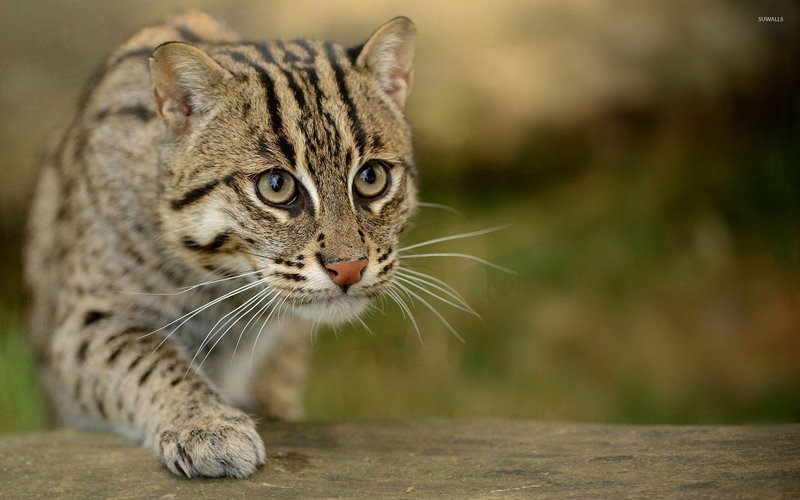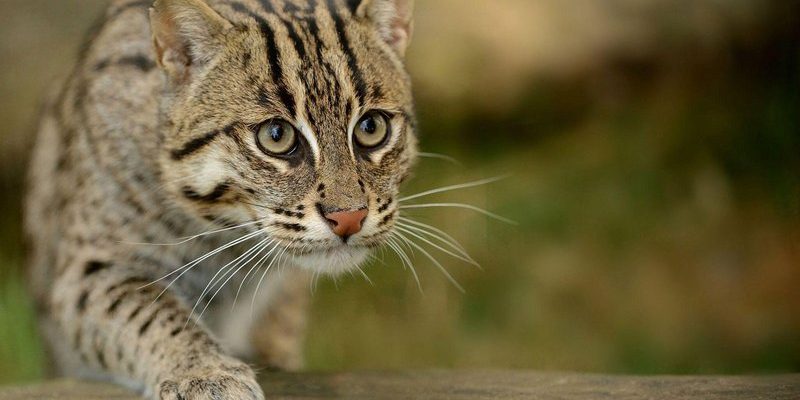
When you think of cats, you might picture a cuddly house pet, curling up on your lap or chasing a feather toy. But what if I told you that domestic cats share their ancestry with some truly wild and fascinating relatives? Wildcats are a diverse group of felines that roam our planet, each with unique traits and behaviors. These wildcat variants are not only crucial for understanding the evolution of our beloved pets but also highlight the incredible adaptability of cats in different environments.
From the expansive savannas to dense forests, wildcats exhibit a range of adaptations that help them thrive. You might be wondering, what are the main types of wildcats? How do they differ? Let’s embark on a journey to uncover these captivating creatures and learn how their characteristics set them apart from each other and from our domestic cats.
Understanding Wildcats
Wildcats, belonging to the Felidae family, are found on every continent except Antarctica. They are skilled hunters and have developed various adaptations that allow them to succeed in their habitats. Each species has its own unique set of behaviors, physical traits, and diet, making them stand out in the feline family tree.
While many people refer to all wildcats as “big cats,” it’s essential to know that not all wildcat species belong to the same category. The term “wildcat” encompasses several species, such as the European wildcat, African wildcat, and Asian golden cat, each of which has distinct features. For example, some wildcats are solitary creatures, while others may live in small groups, and their hunting methods can vary significantly.
Types of Wildcats
European Wildcat
The European wildcat is one of the most well-known wildcat variants. Found primarily in forests across Europe, this small cat resembles a domestic tabby but is more robust and has a bushy tail with a distinctive black tip. Their fur is usually a mix of gray and brown with dark stripes, allowing them to blend seamlessly into their surroundings.
These wildcats are mostly solitary and are excellent hunters. Their diet comprises small mammals, birds, and even insects, reflecting their adaptability. European wildcats are also known for their elusive behavior, making them difficult to observe in the wild. They are nocturnal, which means they’re most active at night, giving them an advantage over their prey.
African Wildcat
The African wildcat is often credited as the ancestor of our domestic cats. This species has a slender body, long legs, and a tawny coat that helps it blend into the desert and savanna landscapes of Africa. They are highly adaptable and can thrive in various environments, from arid regions to grasslands.
African wildcats are opportunistic feeders, preying on rodents, birds, and insects. They have a keen sense of smell and are known for their agility, which helps them catch fast-moving prey. Interestingly, they are more social than some other wildcat species, occasionally forming loose groups, especially when food is abundant.
Asian Golden Cat
The Asian golden cat is another fascinating wildcat variant, found primarily in the forests of Southeast Asia. With a thick golden-brown coat and a stocky build, this cat is both beautiful and powerful. Unlike many wildcats, the Asian golden cat has a versatile diet, which includes everything from small mammals to birds and even reptiles.
These cats are elusive and largely solitary, making them challenging to study in the wild. They are primarily crepuscular, meaning they are most active during dawn and dusk, which allows them to evade larger predators. Their adaptability in various habitats—from tropical forests to mountain ranges—demonstrates the diversity within the wildcat family.
Table of Wildcats
| Species | Habitat | Diet | Size | Lifespan |
| European Wildcat | Forests across Europe | Small mammals, birds | 20-25 inches | 12-15 years |
| African Wildcat | Deserts, savannas | Rodents, birds | 15-30 inches | 10-15 years |
| Asian Golden Cat | Tropical forests | Small mammals, birds | 25-40 inches | 10-15 years |
Habitat and Distribution
Wildcats inhabit various ecosystems around the globe. Their habitats range from dense forests and mountainous regions to open plains and deserts. The fascinating aspect of these cats is their ability to adapt to different environments. For instance, the European wildcat thrives in forests, where its coat enables it to blend into the underbrush, while the African wildcat is well-suited to arid climates.
Habitat loss due to human encroachment is a significant threat to many wildcat species. Urban development, deforestation, and agriculture are shrinking their natural territories. It’s essential to understand that protecting these habitats is crucial not just for the survival of wildcats but for maintaining biodiversity. When wildcats lose their homes, the ripple effects can impact entire ecosystems.
Conservation Status
The conservation status of wildcats varies by species. Some, like the African wildcat, are relatively stable and widespread; others face significant threats and population declines. For example, the Asian golden cat is considered near threatened due to habitat loss and poaching. Various organizations are working to protect these beautiful creatures through habitat conservation efforts and awareness campaigns.
Conservationists emphasize the importance of protecting wildcats not only for their sake but also for the health of entire ecosystems. A decline in wildcat populations can lead to an imbalance in prey species, which in turn affects vegetation and habitat health. By safeguarding these wildcats and their habitats, we help sustain the intricate web of life they support.
Understanding the different wildcat variants opens up a world of appreciation for these incredible felines. From the stealthy European wildcat to the adaptable African wildcat and the elusive Asian golden cat, each species plays a vital role in its ecosystem. By learning about their behaviors, habits, and challenges, we can contribute to their conservation and ensure these magnificent creatures continue to thrive.
As we continue to explore our connection to cats, both wild and domestic, let’s remember that wildcats are more than just distant relatives; they represent the raw beauty of nature and the importance of biodiversity. So, the next time you see your cat lounging in the sun, think about its wild cousins prowling through the forests and savannas, and the fascinating lives they lead.
FAQ
What is the largest wildcat species?
The largest wildcat species is the Siberian tiger, which can weigh up to 660 pounds and measure over 10 feet in length, including the tail. Found primarily in the forests of eastern Russia, these majestic creatures are known for their strength and beautiful stripes. While they primarily hunt deer and boar, they have a varied diet and can adapt their hunting strategies depending on their environment.
How do wildcats differ from domestic cats?
Wildcats and domestic cats share a common ancestor, but there are several key differences between the two. Wildcats tend to be larger, have stronger hunting instincts, and are generally more solitary. Domestic cats have been bred for specific traits, such as temperament and appearance, which makes them more suitable for living with humans. While domestic cats can exhibit wild behaviors, they have been domesticated over thousands of years.
Are wildcats solitary animals?
Most wildcat species are solitary creatures, preferring to hunt and live alone. This behavior allows them to establish and defend their territories more effectively. However, some species, like the African wildcat, can show social behavior, especially when food is plentiful. Social structures can vary based on environmental conditions and prey availability.
What threats do wildcats face?
Wildcats face numerous threats, including habitat loss, poaching, and climate change. As human populations expand, wildcats often lose their natural habitats to agriculture and urban development. Additionally, illegal hunting for their fur or due to conflicts with livestock can also contribute to declining populations. Conservation efforts are crucial to mitigate these threats and ensure wildcats’ survival.
Can wildcats be domesticated?
While wildcats share a common ancestry with domestic cats, they are not easily domesticated. Their strong hunting instincts and territorial behaviors make them challenging to keep as pets. Additionally, many wildcats require specific environments to thrive, which is difficult to replicate in a home setting. It’s essential to respect their wild nature and focus on conservation efforts rather than trying to domesticate them.
What is the role of wildcats in the ecosystem?
Wildcats play a crucial role in maintaining the balance of their ecosystems. As predators, they help control the populations of prey species, such as rodents and birds. This predation helps prevent overgrazing and protects vegetation. By maintaining these populations, wildcats contribute to the overall health of their environment, showcasing the interconnectedness of ecosystems.
How can I help wildcats in my area?
You can support wildcats by advocating for habitat conservation and participating in local wildlife protection initiatives. Educating others about the importance of wildcats and their habitats is also vital. Consider volunteering with organizations focused on wildlife preservation or supporting policies that protect natural landscapes. Every little effort counts in safeguarding these magnificent animals.
What do wildcats eat?
Wildcats are carnivorous hunters, and their diet typically consists of small mammals, birds, and occasionally insects. The specific diet can vary by species and habitat. For example, the African wildcat primarily preys on rodents, while the Asian golden cat has a more varied diet that includes birds and reptiles. Their hunting skills allow them to adapt to the availability of different prey types in their environment.
How can we track wildcat populations?
Tracking wildcat populations can be done through various methods, including camera traps, radio collars, and genetic sampling. Researchers use these techniques to monitor their movements, behavior, and genetic diversity. By collecting data, scientists can assess population trends, identify threats, and develop effective conservation strategies to protect wildcats and their habitats.

